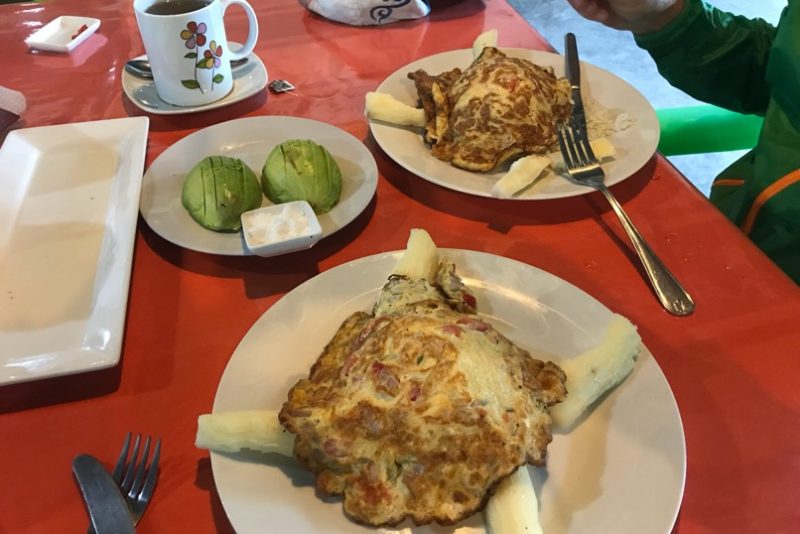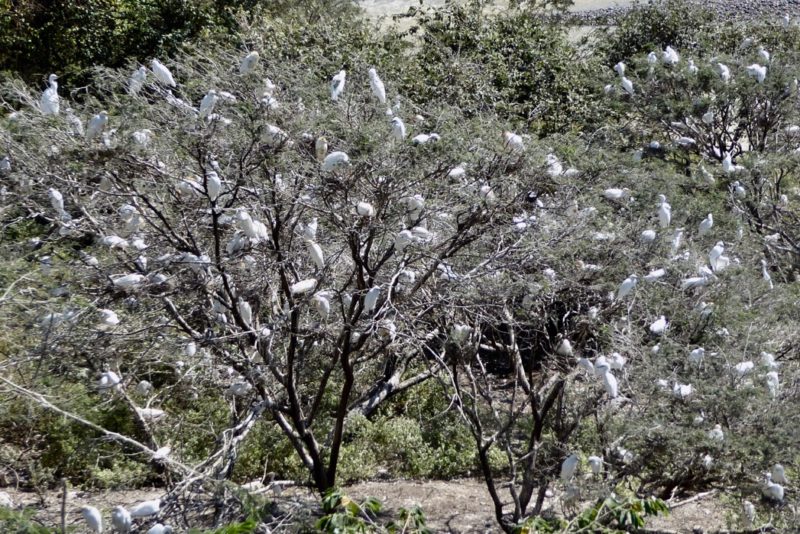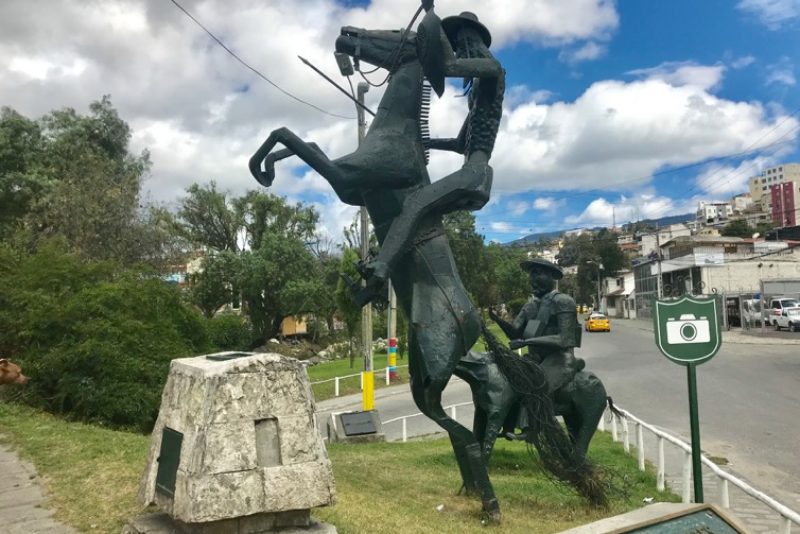The attraction of the small village of San Pablo was the walk to the third highest waterfall in the world (actually the 17th, but don’t tell the Peruvians). The total fall height is over 700m but because it drops in 2 falls I think it loses places in the waterfall stakes. Despite low water volume, it was still very impressive.
We walked a circuit ending up in a village on the other side of the valley , linking back to our bikes by a ride on a moto-taxi.
After lunch we carried on down the Utcabamba gorge, being allowed to ride a road closure enabling us to get through an area of road works before dark and ahead of traffic, some that had been waiting 5 hours.
Our campsite that night was a colourful one, in a park like setting beside a restaurant, but we were rudely awoken by the cacaphony of close to a hundred fighting cocks in cages, there for fighting/gambling while the children play in the pool (we figured).
Next morning we left the gorge behind and emerged into rice fields at all stages of cultivation – from the new shoots coming up in the flooded fields to dry fields of rice stubble being burnt ready to start the cycle again.
We took a dirt road shortcut across to the Marañnon river, crossed a week ago at Balsas. No bridge here, just 2 ferry rides to take us and local motorcyclists across. It had been a helluva hot day (late 30’s) so we had a soak in the warm water before setting up camp at another recreation area under a coconut palm thatched roofed shelter. It was so warm we slept without the fly sheet. Soon after dark the heavens opened and it poured most of the night. The palm fronds kept us dry from above and we were pretty chuffed that the large puddle of water we were almost floating in, had not penetrated the floor of our new tent.
We rode into Jaén the next morning and lucked in with a fast trip through to Zumba in Equador, via 3 different vehicles. The last 150km of Peru is deeply convoluted, forested hills with coffee beans drying on the highway (taking up half a lane in many cases) because it is the only flat area people have available. After crossing the border we jumped on an open bus for the 20km of steep undulating dirt road (took over an hour) to our first night’s rest in Equador in the town of Zumba.
The last stage of this interlude of vehicular traffic was an early start the next morning jumping on a regular bus for the slow trip to Loja. We would have preferred to ride but we don’t want to miss the better riding in central and northern Equador before our time runs out. It could be called cherry picking and the purist tourers might have a word to say about it!

























